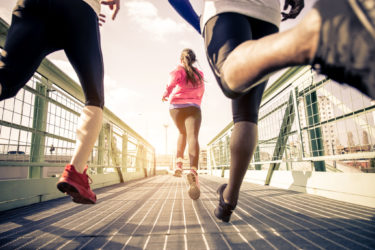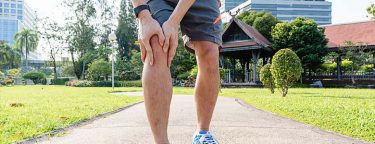How to Treat and Prevent Runner’s Knee
Do your knees hurt during or after a run?
It’s quite common to experience a little discomfort in your knees during or after running, but if the pain persists or increases, you may have what is commonly referred to as Runner’s Knee.
What is runner’s knee?
Runner’s Knee is a broad term for a range of conditions that cause pain around the knee joint. Contrary to it’s name, Runner’s Knee can actually be caused by any repetitive movement that stresses the knee joint. Runner’s Knee is usually caused by overuse, rather than acute trauma or injury and most cases fall into two categories: Anterior (front) knee pain and Lateral (outside) knee pain.
Not a runner? You might be interested in our post on Treating Knee Pain.
Why does running hurt my knees?
The repetitive action and significant load placed on your knees when you run make it a frequent offender in causing of knee pain. Irritation of the soft tissue and lining of the knee, worn or torn cartilage or strained tendons are often the underlying reason for pain experienced in the knees. Imbalances elsewhere in the body, like the back or hips, can also be transferred to the knee, causing pain known as referred pain.
Some common contributors to Runner’s Knee:
- overuse
- poor lower limb stability (ankles, knees, hips)
- muscle tension and imbalances
- trauma, misalignment, poor tracking or fracture of the patella (knee cap)
- Plica syndrome or synovial plica syndrome
What are the symptoms of runner’s knee?
If you have a dull ache or pain around, behind or just above the patella (knee cap) you’re experiencing the common symptoms of Runner’s Knee. Some people may also have swelling, popping or grinding in the knee. However, swelling, popping or grinding without pain is not always cause for concern.
Activities that can aggravate the knee and result in symptoms:
- Walking
- Climbing or descending stairs or hills
- Squatting
- Kneeling
- Running
- Sitting down or standing up
- Sitting for a long time with a bent knee
How do you fix Runner’s Knee?
The great news is that Runner’s knee is not permanent and the pain is generally relieved from rest and de-loading or minimising aggravating activities.

Your long term management should focus on decreasing the load on the knee joint. You can achieve this by improving muscle balance and activation, increasing lower limb stability and strength, increasing flexibility and improving your biomechanics. Runner’s Knee will vary person to person, so the fastest way to rid yourself of knee pain is to seek the help of a health professional, rule out a more serious injury or cause, then follow their guidance and rehabilitation plan.
Treating runner’s knee at home
The R.I.C.E. principles can be used to manage the acute symptoms of many soft tissue injuries, including Runner’s Knee.
- Rest:Avoid repetitive stress on the knee.
- Ice:To reduce pain and swelling, apply an ice pack to the knee for up to 30 minutes at a time and avoid any heat to the knee.
- Compression: Wrap your knee with an elastic bandage or sleeve to restrict swelling but not too tightly as to cause swelling below the knee.
- Elevation: Place a pillow under your knee when sitting or lying down to prevent further swelling. When there is significant swelling, keep the foot elevated above the knee and the knee above the level of the heart.
Seeking professional help
Depending of the cause of your knee pain, different treatment may be required, so a health professional is your best bet to determine which approach is best for you and your knees. A physiotherapist can diagnose and treat an acute knee injury, while an Exercise Physiology will prescribe exercise for chronic or reoccurring pain, progression back to running or other activities, and prevention of future pain or injury.
A treatment program will generally focus on one or more of the following:
- Releasing tight muscles
- Restoring range of movement
- Improving muscle activation
- Improving lower limb stability and strength
- Improving running biomechanics
Remember that rehabilitation exercises themselves are important, but are only one piece of the puzzle. Your health professional is there to educate, assist with rehab adherence and safely manage the progression of exercises, strength and loading so that you can return to running without pain as soon as possible.
How to prevent runner’s knee
Top tips to avoid runner’s knee
- Warm up and cool down
- Don’t forget recovery sessions between training
- Introduce an individualised strength program
- Don’t run through pain
Preventing Runner’s Knee is much the same as treating it – focus on your range of movement, muscle activation, stability and biomechanics. A good warm up and cool down will work wonders to improve your range of movement and muscle activation. Using a foam roller or trigger ball can also help to relieve tightness. While there’s no shortage of exercises that can improve lower limb stability, strength and running biomechanics, consider an individualized program that targets the exercises specific to your needs and achieve the most efficient results.
Check out the Running Warm Up and Cool Down we’ve put together to help keep your knees happy!
Don’t let injuries keep you from reaching your full running potential. Bodytrack’s Exercise Physiologists can help you with a running biomechanic assessment and exercise program to manage pain and improve your running performance. Contact us for more info or book a consultation today!

